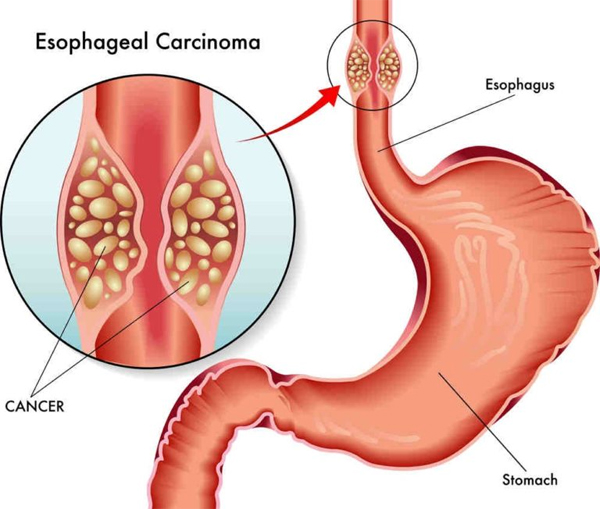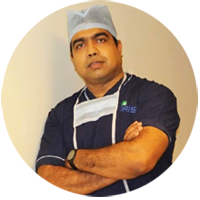Esophageal cancer is a tumor that forms in tissue lining the esophagus. The esophagus or gullet is the muscular tube through which food passes from the throat to the stomach.
The two main types of esophageal cancer are Squamous Cell Carcinoma and Adenocarcinoma. Both types occur at about the same frequency.
Squamous cell carcinomas are most prevalent in Asia, whereas adenocarcinomas are more prevalent and increasing rapidly in Western countries. Most esophageal cancers occur in people older than 65.
Squamous cell carcinomas are mainly associated with alcohol intake and smoking whereas adenocarcinomas are mainly associated with gastroesophageal reflux which is more related to obesity.

The main risk factors of Esophageal Squamous Cell Carcinoma are:
Tobacco use,Alcohol consumption,Low intake of fresh fruits and vegetables,Drinking maté, Betel quid chewing, certain medical conditions e.g; Achalasia, tylosis and Plummer-Vinson syndrome.
The main risk factors of Esophageal Adenocarcinoma are:
• Barrett’s esophagus,Gastroesophageal reflux-disease,Obesity.
• Tobacco use and alcohol consumption can both increase the risk of adenocarcinoma, although the effect is smaller than in squamous cell carcinoma.
Esophageal Cancer can be suspected in different situations:
• Clinical examination
• Endoscopic examination
• Endoscopic ultrasound
What are the Treratment options?
Planning of the treatment involves an inter-disciplinary team of medical professionals.
The treatment will usually combine intervention methods that:
• Act on the cancer locally, such as surgery or radiotherapy
• Act on cancer cells all over the body by systemic therapy such as chemotherapy
Surgery:
Surgery is the treatment of choice in fit patients. When nearby lymph nodes are affected, surgery is still the best treatment. However, affected lymph nodes hamper the chance for cure of the patients and therefore a combined treatment including chemotherapy or chemotherapy with radiotherapy should be discussed in a multidisciplinary team if an involvement of lymph nodes is suspected in initial staging.
The part of the esophagus containing the tumor will be removed during surgery.In addition to the removal of the esophagus, the surgeon will remove all nearby lymph nodes together with the esophagus. They will be examined by the pathologist to see if they contain cancer cells, which is important to define the stage.
Adjuvant Therapy:
An adjuvant therapy is a therapy given in addition to the main treatment, which, in this case, is the removal of the tumor by surgery. Chemotherapy used before surgery and, if possible, after surgery is the standard treatment. The combination of both radiotherapy and chemotherapy before surgery is another option.


